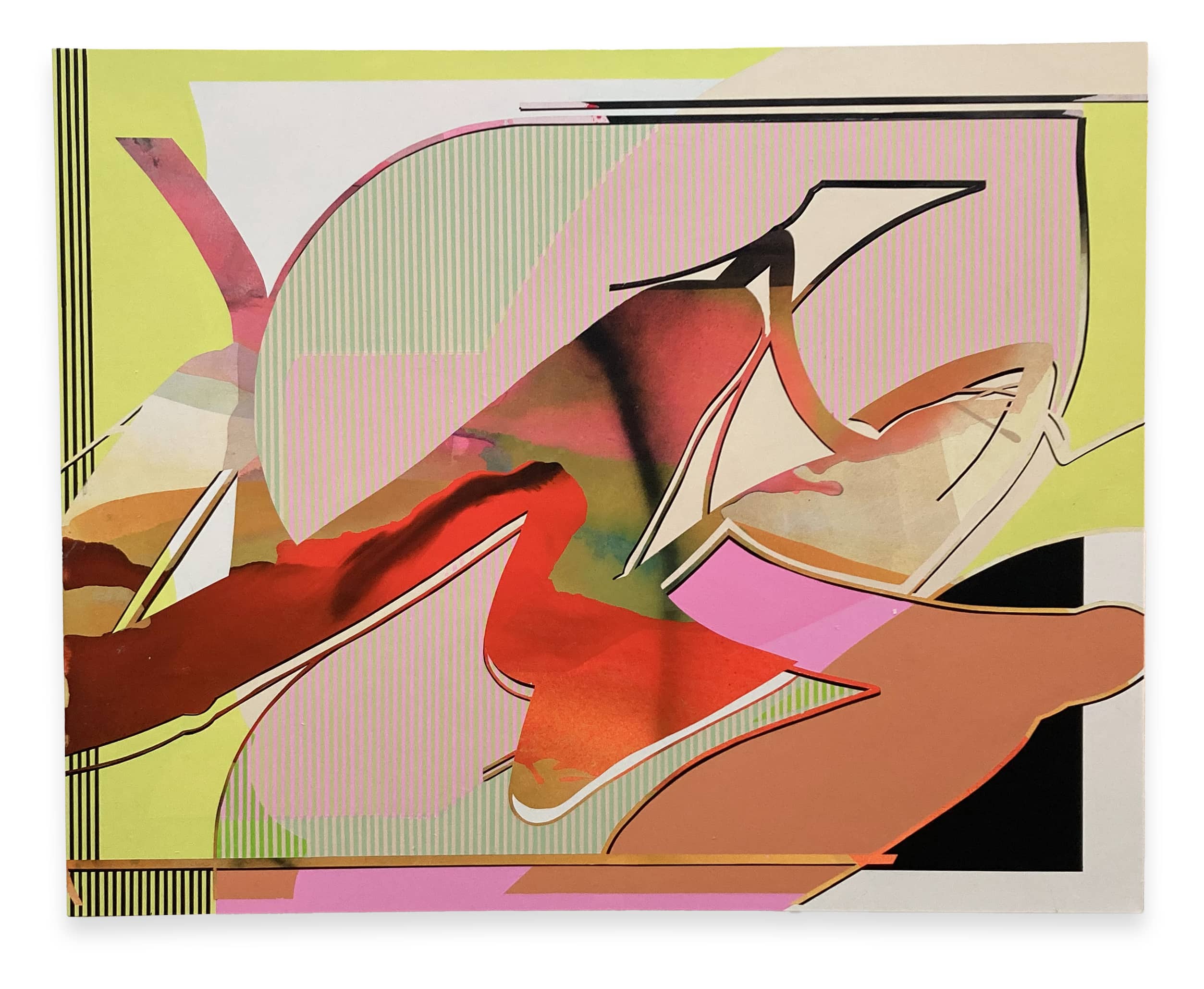Canadian artist Kathryn MacNaughton deftly interweaves figurative painting with a combination of abstract expressionism, geometric abstraction, and even conventions of the painted still-life into one poetic statement. These forms of figuration and still life have been flattened, like their more abstract counterparts, to face the frontal plane of the canvas. The canvas, and the analogue process of the painter’s hand, references the computer screen and the digital touch, where these pieces begin to take their shape.
She states: “I wanted my digital work to look raw and handmade. Now that I create ‘physical’ paintings, I want to give the illusion that the work is digital”. MacNaughton, who trained and worked as a graphic designer, uses this ‘digital compression’ to her advantage, and one begins to use typically post-analogue language when discussing her work: masking, layering, colour-blocking, silhouette. These concepts are paired with more Romantic expressive movements: a scribble dances across a bust, outlined in silhouette, guiding the viewer’s eye around the flattened curves as one guides the finger across a map.
The work simultaneously houses a sensuality one aligns with gender tropes: suggestions of feminine curves play shadow-tricks, appearing as vessels or curtains that guide the eye, but also obscure and reveal the picture plane while painterly splatters leap behind and before the picture plane. But also, the masculine, referencing brutalist and Modernist architecture: the austerity and monolithic qualities of shape, form, and line. We see references from Robert Morris to Georgia O’Keefe; Diebenkorn to DiChirico. There is a sense of theatricality to her revelations, a cheeky play of light and dark versus form and technique – an art of individual, delicate mastery.











